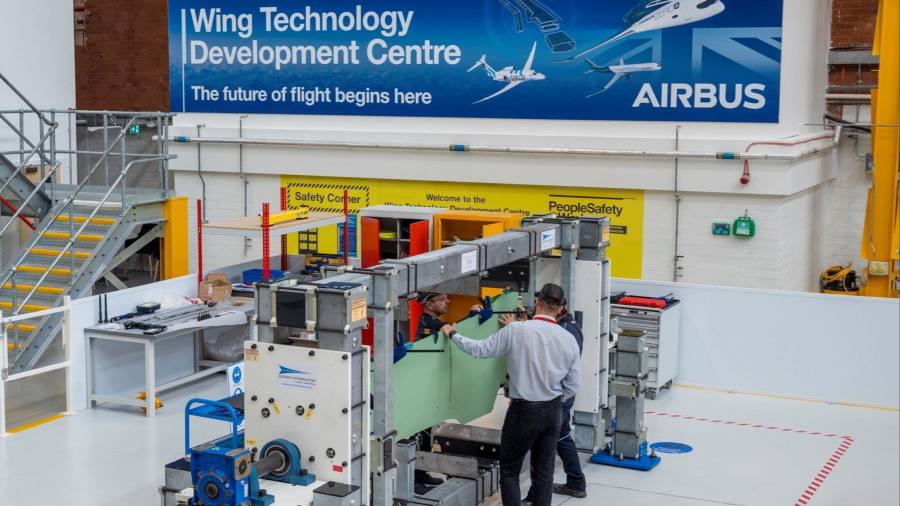
Receive free Aerospace & Defence updates
We’ll send you a myFT Daily Digest email rounding up the latest Aerospace & Defence news every morning.
Airbus is moving ahead with plans to develop a lightweight wing in the UK for the next generation of its best-selling A320 airliners as the group looks to maintain its lead over US rival Boeing.
The European plane maker has invested in a wing technology development centre at its sprawling Filton site near Bristol, where both Concorde and the Bristol Blenheim bombers were built.
The facility, which was opened on Tuesday, will be used to build and test wing demonstrators for a range of programmes.
The investment is part of Airbus’ efforts to develop a more fuel-efficient aircraft to replace its best-selling A320 family of single-aisle jets. The company has stolen a march on Boeing in the single-aisle segment of the market and holds a roughly 60 per cent share.
“This is all about getting technology ready for a future single-aisle,” said Sue Partridge, head of the Filton site and the Wing of Tomorrow Programme.
The Airbus wing development programme was launched in 2016 to test the latest composite materials and new technologies in aerodynamics. The prototype wings have a wider span and will require folding tips to access airport gates.
US rival Boeing is also working on a longer wing for its own next generation to replace its 737 aircraft. Neither company is expected to bring a completely new aircraft design to market before the middle of the next decade.
Longer, lighter wings make it easier for an aircraft to create lift without using as much fuel, helping to reduce carbon dioxide emissions.
A new lightweight wing would also need to be at the right cost and capable of being produced at a high build rate, said Partridge.
Airbus has already built two of three planned full-size prototype wings: one to understand systems integration and a second, currently at Filton, which will be tested structurally to destruction. The third will be assembled to test industrial capability and scaling-up production.
The company will also draw on new manufacturing techniques and increased automation. The experimental wings are not a fixed design yet for a next-generation aircraft but are allowing the company to test various prospective technologies.
The new centre adds to Airbus facilities in the UK, which is home to its wing design and manufacturing. The company has been helped by government funding towards research and development. Since 2014 it has been awarded £117mn by the Aerospace Technology Institute for the Wing of Tomorrow Programme.
Partridge said the ATI was a “huge enabler for us . . . it gives us stability”.
The government separately on Tuesday announced that £12mn of £685mn previously committed towards aerospace via the ATI over a three-year period would be used towards Airbus’ X-wing project, which is looking at how to adapt wing shape to suit flight conditions.